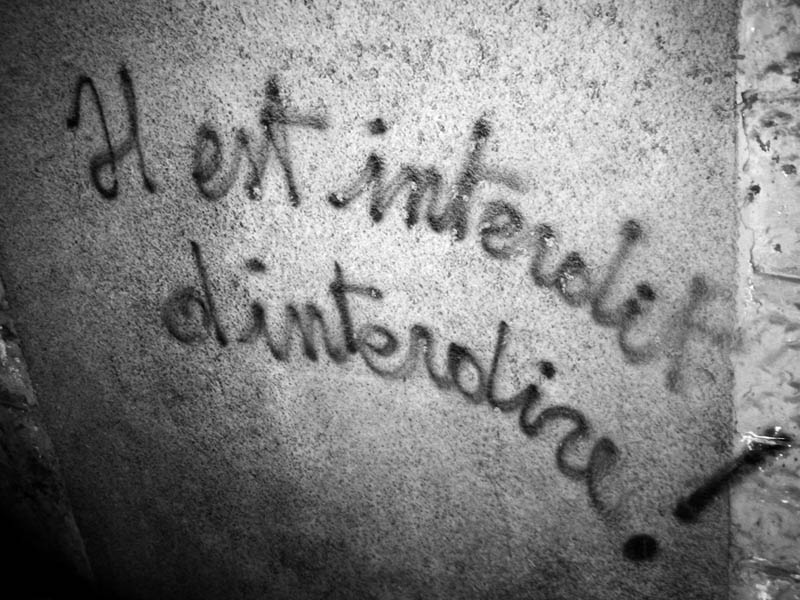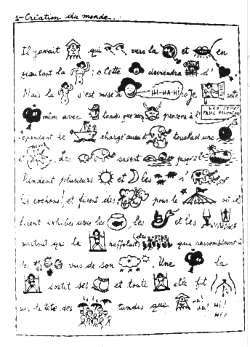


The Situationist International (SI) was formed by a merger of two post-war continental art groups, Guy Debord’s Lettrist International and Asger Jorn’s International Movement for an Imaginist Bauhaus (IMIB) .
Lettrism was an avant-garde movement, established in Paris in the mid-1940s Isidore Isou by a Romanian immigrant. The movement was rooted in Dada and Surrealism. In French, the movement is called Lettrisme, from the French word for letter, arising from the fact that many of their early works were centred around letters and other spoken or visual symbols. They applied their theories to all areas of art and culture, markedly in painting poetry, film ,and political theory.
Isidore Isou, The God's Diaries (1950)
For the early part of its existence the SI continued with the artistic work of the Lettrist International and it’s infuence can be seen in their continual use of text.
They projected a number of 'situations' which promoted a new global culture that was based around the continually changing principles of contemporary art rather than what they saw as a worn-out, materialistic culture. They proposed the concept of ‘Unitary Urbanism’ , the study of the effects of geographical environment, consciously organized or not, on the emotions and behavior of individuals living in that environment. Thus, it may be noted that there were very few organized exhibitions of Situationist work while they were active as they wanted art to become a part of every day life.
"A unitary urbanism — the synthesis of art and technology that we call for — must be constructed according to certain new values of life, values which now need to be distinguished and disseminated."- Gil J Wolman
"Beneath the boardwalk, the beach."







